After Comic-Con, Cosplayers Get Greater Clarity on SAG-AFTRA’s Strike Guidelines
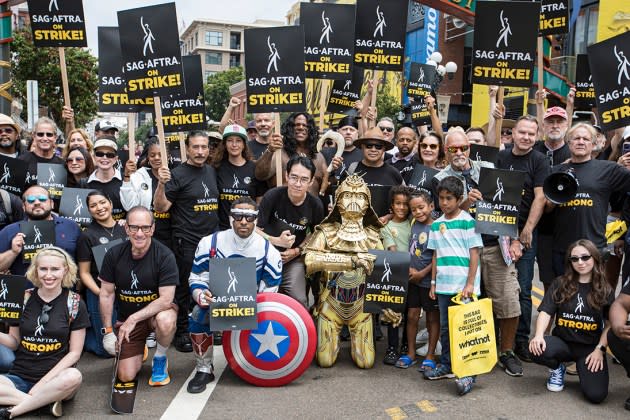
Under the towering green Gaslamp District sign on Fifth Ave. during the Friday of San Diego Comic-Con, a giddy group of cosplayers and SAG-AFTRA members stood together holding strike solidarity signs.
Organized by the actors union’s San Diego membership president Larry Poole, the photo-op and gathering was approved by the national actors union and shared with local members through an email blast a handful of days before. Striking SAG-AFTRA and WGA members, as well as cosplayers — both of the fan variety and some who are themselves in IATSE — joined the 30-minute meet-up for local talent, one of the first in the city since the performers guild announced it would strike beginning July 14.
More from The Hollywood Reporter
SAG-AFTRA Justifies Interim Agreements as "Vital Part of Our Strategic Approach" Amid Debate
How One Dual Striker's Custom Hats Are Raising Money for Picketers
“The gathering was really an opportunity to get together and say, ‘Hey, we are with our brothers and sisters in L.A. and New York, and it was a great opportunity, because Comic-Con is one of the most visible media events,” SAG-AFTRA union member Victor Chan, who has worked on commercials and in theater, told The Hollywood Reporter. “As far as I know, this was the real first local event to show solidarity because there aren’t any studios here to picket, to protest.”
While not officially tied to Comic-Con like panels “Inside the Writers’ Room: Building a Better Future for Writers” and “AI in Entertainment: The Performer’s Perspective,” the photo-op was in the vein of the fan-organized gatherings that have become commonplace at pop culture conventions. It was also a relatively positive affair in light of the week leading up to Comic-Con, which resulted in cosplay hobbyist Sam Oester creating a graphic to help cosplayers navigate the strike guidelines after a wave of interactions she describes as going from disagreement to bullying among cosplayers.
The online squabbling came after SAG-AFTRA released a set of guidelines, which encouraged cosplay influencers to stand in solidarity with the union and abstain from portraying characters from struck companies. For Gillian Foxglove, who has cosplayed for a decade with four years of professional experience, part of the issue was about people who genuinely “worried that just cosplaying the superhero from the movie you love consists of scabbing.”
But there were others “using this as an opportunity to make themselves look good, to talk about something that is in the zeitgeist,” Foxglove shares during a phone call. For Tegan Feehery, who’s known professionally as Sayakat Cosplay, the drama — which included telling fans to stop watching shows and films, stop reading fanfic and making fanart — was fueled by people who were engaging in “social hierarchy climbing” within the community.
“I know that it’s because the strike officially began with SAG right before the biggest Comic-Con, but what started happening is the message was really getting derailed from the actual importance of the strike,” Oester tells THR in a Zoom interview during Comic-Con weekend. “It became this weird online drama when the SAG strike is what should have had the space, especially when it came to people bullying other people.
“They’re not going to put out official communication with us while they’re trying to make a living wage, not get kicked out of their apartments, have medical insurance,” she adds. “This is not a priority, nor should it be a priority.”
Those guidelines — aimed primarily at influencers who may be seeking union membership under SAG-AFTRA’s relatively new influencer contract — cover characters from currently struck TV and film productions as well as past productions that, if they were airing now, would have otherwise been struck. Cosplay influencers are encouraged to complete any work that was contracted or agreed upon before the July 14 strike start and to decline work of both the paid and “organic” (e.g. unpaid) variety after that date.
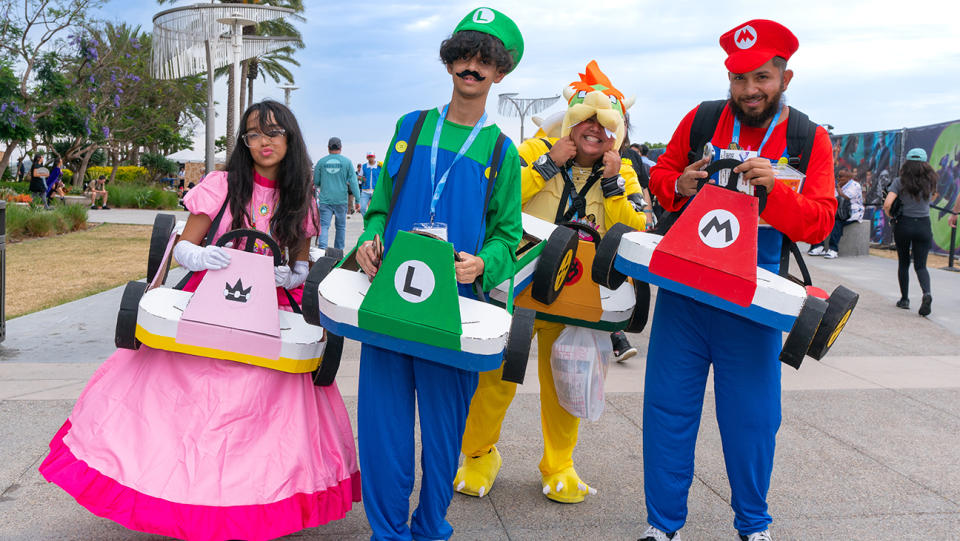
But what constitutes as struck has been somewhat difficult to discern among cosplayers, even for those that know the AMPTP does not represent every Hollywood studio. “Streaming has made it incredibly difficult to know what’s struck and what isn’t,” Oester says. “It’s like, ‘Well, wait a second. Did Netflix pay this production company to produce it for them? Or was this organically produced by this production company and then it just happened to go on Netflix?'”
Mergers have also played a part in the confusing nature of struck work for cosplayers, with multiple AMPTP studios being attached to larger companies that have partial ownership of or share their IP with comics and video game publishers. It’s an important delineation for some who want to support SAG-AFTRA but still want the chance to continue to cosplay or make cosplays for others.
“We’re in a world where the producer isn’t necessarily the exhibitor, but sometimes the producer is the exhibitor,” Shaan Sharma, who sits on the SAG-AFTRA Board of Directors and serves on its TV and Theatrical Negotiating Committee, tells THR in a Zoom interview during SDCC weekend. “These companies have also become such big conglomerates that control so many things, I don’t even know where some of the big companies may be wrapped up under the same umbrella, like NBCUniversal or Warner Bros. Discovery.”
Yet, amid the crossed wires of production, distribution and multi-medium characters, the “organic” stipulation in SAG-AFTRA’s guidelines arguably caused the most backlash, inadvertently blurring the line of fan and influencer for some. It made “it sound like any cosplay of any movie, or even going to conventions at all, would be a scab, which is just not true,” says Foxglove.
It was language that also tripped up some of SAG-AFTRA’s membership, says Sharma, who reached out to the union about how to attend festivals and cons, similarly to how Jamie Lee Curtis and David Dastmalchian appeared at SDCC — on spotlight panels discussing their careers and new work outside TV and film.
“I think what they wrote makes complete sense for their members that understand what those words mean, but from the outside looking in, there are a lot of cosplayers that want to be supportive of the strike and make sure that they aren’t crossing the picket lines and scabbing that [because of that language] jumped to conclusions,” she continues.
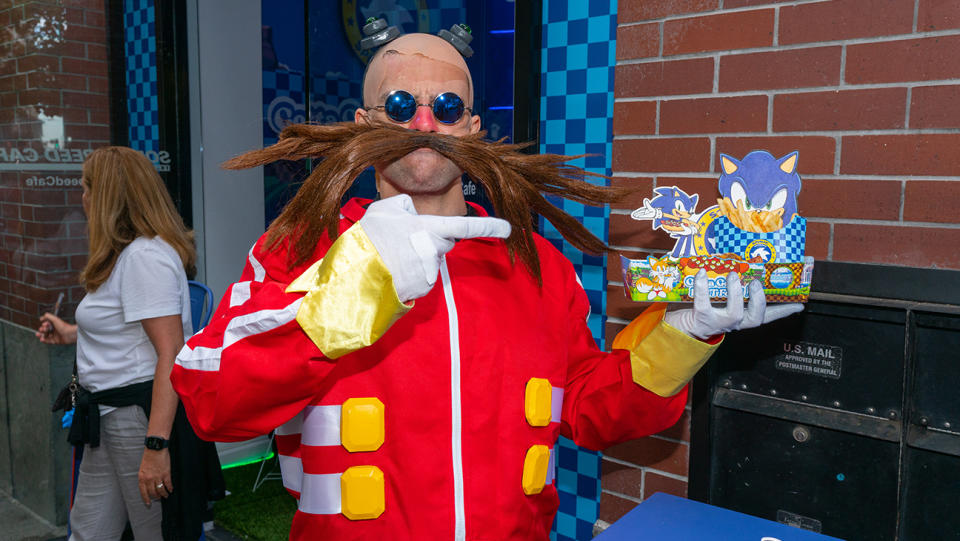
That lack of clarity initially resulted in the spread of misinformation in a community where influencer has become a term with a range of meanings, cosplayers tell THR. “This was done in a time where basically anybody who has social media is a quote-unquote ‘influencer,'” says Feehery, who — after cosplaying for a decade — earns 100 percent of her living off of it like many do, primarily as a costume maker versus performer. “There’s a lot of pressure to ‘perform’ and monetize everything that you do.”
“I’m not saying the union leadership of SAG wasn’t aware of the potential complications for people who are influencers, but I think they were rightly focused on their contract negotiations, called for the strike, voted for the strike, and it was a scramble to put into place all these guidelines,” she adds. “The last time they were on strike, none of this ecosystem existed. The internet was three people’s computers that worked on an intranet. As an ecosystem, people influencing on the internet has only been viable for 15-ish years. It’s such a new avenue of employment.”
Sharma acknowledges that the rollout wasn’t completely smooth. “There was some confusion because all of this has happened so quickly,” he says. “We have 450-ish staff, but that’s down from the 600 we had before the pandemic. We’re still rebuilding, so we’ve all been working really hard to try to staff up, but a lot of responsibility is on very few people’s hands. So I think that we didn’t have every single answer to every single question right away.”
But while the cosplay community might think about “influencer” more broadly, for SAG-AFTRA, the term has a very specific definition under the union’s Influencer-Produced Sponsored Content Agreement, which Sharma describes as “basically commercials agreements.”
It only covers advertiser-sponsored content that directly features that influencer; is self-produced by that influencer through the contracted producer (so the company controlled and operated by or on behalf of the named Influencer); and released, exhibited and/or digitally distributed through the influencer’s or advertiser’s own websites, social media channels (Facebook, Instagram, Snapchat, TikTok, Tumblr, Twitter and LinkedIn), and/or YouTube channels.
Content that is written, filmed or produced for the advertiser by any party other than the influencer — such as a production company, ad agency or PR agency — is not covered by the agreement. There are also a number of things that fall out of the agreement’s scope and are considered “excluded services.” That includes “streamed or recorded on-camera or voiceover content that is not self-produced and/or that falls under the jurisdiction of any other SAG-AFTRA contract,” “creative, editing, distribution and print work” as well as work, like tweets, that is with an advertiser and unrelated to the “influencing” tied to the SAG-AFTRA agreement.
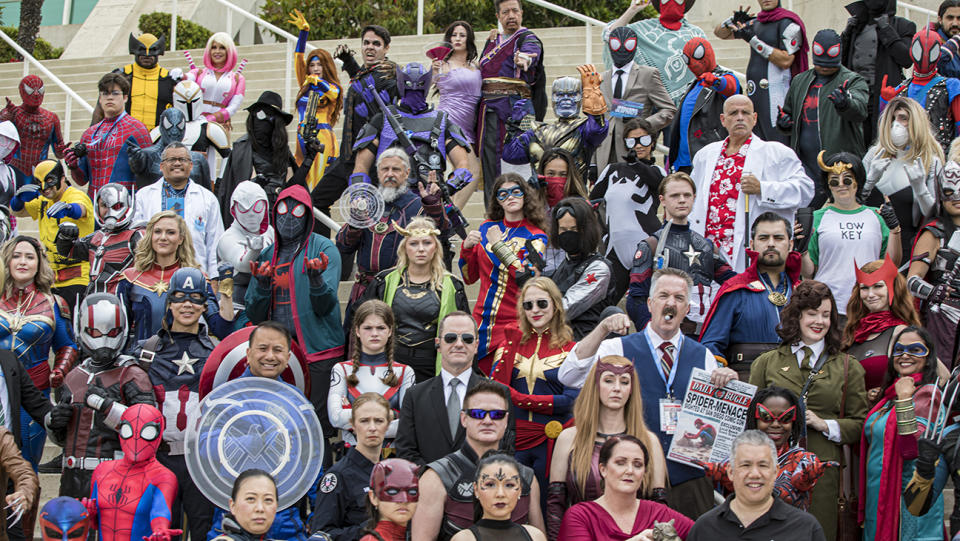
That should offer relief to around “90 to 95 percent” of the cosplay community, who Feehery says has no “monetary involvement” with struck companies, and who makes a living off of commissions as well as cosplay classes, books, Patreons, Etsy shops and more. “The vast majority of cosplayers, they don’t even have to think about, ‘Should I do this?’ They’re not under contract with anybody. They are not members of SAG-AFTRA. They are fans being fans,” she continues. “I think that’s what a lot of people [were] doing — making people feel bad for being a fan of something while it’s being struck. But SAG has not said, ‘Don’t be a fan.’ They have actually said, ‘Continue being a fan.'”
Sharma stresses that what the union puts forth is not a requirement for anyone who falls outside its hyper-specific definition of influencer and isn’t either already in the union or may want to be.
“Our strike rules only apply to our members, so if you’re not a member of SAG-AFTRA, it’s a free country,” he tells THR. “We have said that if any social media influencers who have bonafide brand deals from companies do try to undermine our strike, they will never be admitted to SAG-AFTRA in the future. So for anybody who’s hoping to make a transition to on-camera performance or wants to be covered by the union [under the influencer agreement], they will find that their actions right now could get in the way of those future aspirations.”
The organic stipulation allows cosplayers to attend festivals, premieres or other events like comic conventions “as an individual” but not as someone there to promote struck work by serving on a Q&A panel or participating in red carpets, including photo step-and-repeats sponsored by struck companies that feature their logos or other promotional signs.
That means cosplay influencers who want to be in the union, already are or want to stand in solidarity can continue to field photo requests from regular people, at fan-organized photo-ops and potentially cosplay meet-ups like the one for The Last of Us at SDCC hosted by the Costume Designers Guild, so long as none of it directly promotes struck studios under the influencer agreement guidelines.
For several cosplayers THR spoke to, it’s an easy concession to make. “It’s very low stakes here in the middle of the east coast where I am [in the D.C. metro area],” says Foxglove. “I have to think maybe once or twice what I’m cosplaying and what I’m putting up, but it is so easy for me to just shift gears and go, ‘Got it, all right. I’m cosplaying from anime, and I’m cosplaying from video games and comics.’”
Cosplayers are also encouraging each other to really “pay attention” when it comes to “cosplay websites that only do the movie and TV show version of the outfit” and even the film versus comics stylization of a character like Spider-Man, says Evan Cowdrey, who cosplays professionally under Eavnscosplays.
“The main reaction was we can still do our cosplay stuff, but we’re not going to do it at cons, and we got to figure some different stuff out,” says Cowdrey, who has been working professionally for two years. “Until this is finally said and done and WGA and SAG get what they deserve, everything they’ve had coming towards them, then just put it in your drafts.”
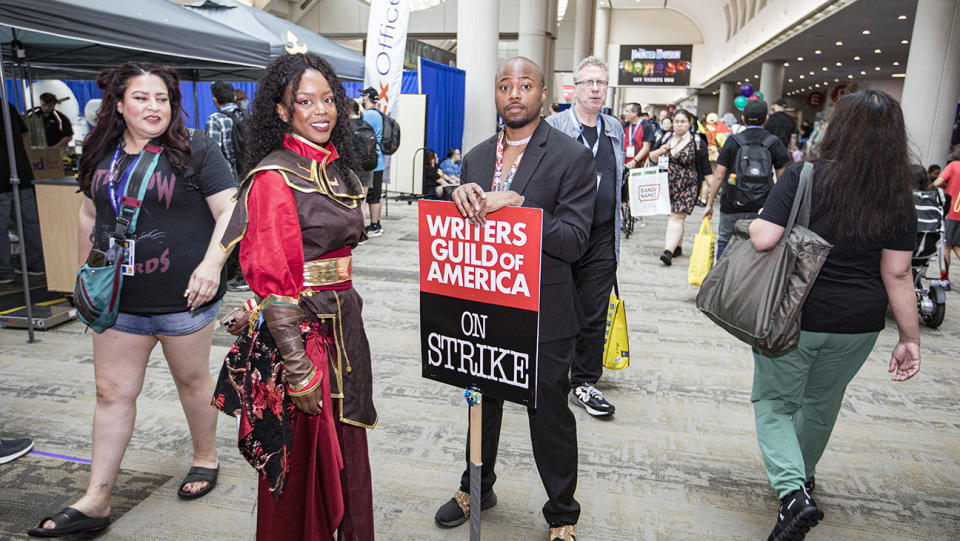
For others, the temptation might prove difficult. Cowdrey says some — including those on “scab TikTok” — are being offered higher rates to show up to events amid the strike.
“People that I know have been talking to their managers, like, ‘If there’s anything to do with movie promotion, cut me out,’ because companies are trying to pay content creators right now to come to these premieres more than we’ve ever been paid,” he says. “It’s usually like $2,000, [but] people have been sent emails: ‘Here’s $7,000. Here’s $5,000. Here’s $9,000. Come to the premiere.’ For most people, they don’t get paid to go to the premiere. They just get invited to the premieres, but now it’s desperation.”
Oester adds that companies offering cosplayers deals might not be immediately clear or entirely transparent in terms of their relationship with a studio and what is considered payment.
“Sometimes they want to emphasize that it’s unpaid work, but you’re still getting compensated in some way. If they’re paying for anything for you — your travel, your badge at Comic-Con — that’s compensation,” she says. “With these brand deals, you might find out that something that seems like it’s not for a studio actually turns out to be for a studio. It’s like, ‘We want to offer you this influencer brand deal for these vitamins,’ and then it turns out that they’re actually doing this because they have this weird cross-promotion with a superhero studio — and you wouldn’t expect that.”
This, Sharma says, is part of why SAG-AFTRA has asked its own membership — and allied cosplayers — to not perform work in relation to past AMPTP titles. “The reason past is so important is because as we starve the AMPTP of content by our work stoppage, they’re going to go back in their libraries and try to pull things out from the past that they can use to plug those gaps,” he explains. “So that’s why it’s just as important for us to protect ourselves from re-releases and promotion of past work.”
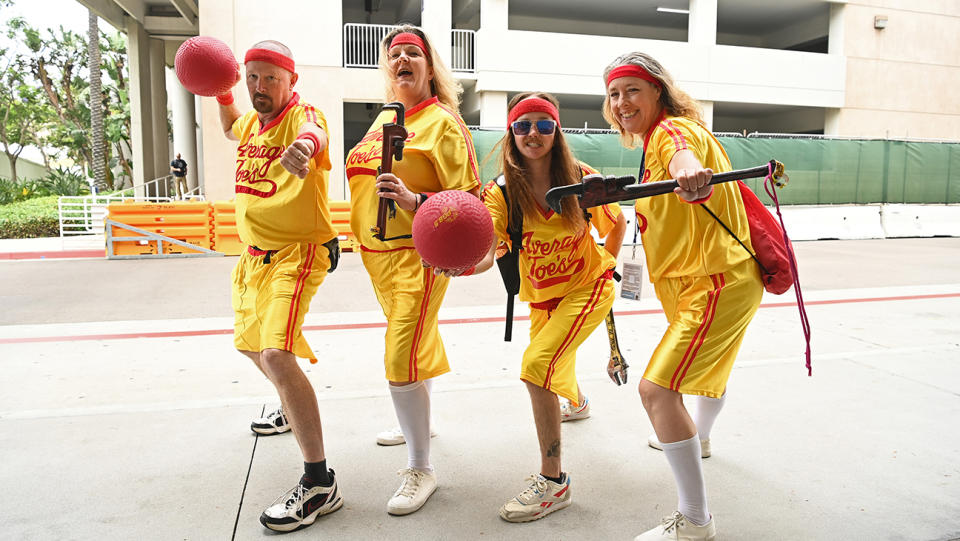
Cowdrey says he’s already seen “a very small group of creators that are almost trying to make excuses for why they should be able to do some things,” including one who said that actors going on strike might give them “an in” in terms of opportunities. But Foxglove says that when offers come, it’s important “to think about what they’re doing.”
“It’s like, my guy, why do you think they’re approaching you now?” she says. “They’re not paying their union members well. What makes you think they’re going to pay you well and be fair to you? Why do you think they want your content and your ideas and your skills now?”
Sharma emphasizes that while SAG-AFTRA can withhold future membership for cosplayer influencers, the union can’t control individual actions at the moment. Still, he asks that “if you do choose to post something that is representative of some AMPTP past, present or future project, at least try to use that to draw people’s attention to the strike and what we’re fighting for, the resources that could help our community survive during this work stoppage like The Entertainment Community Fund.”
“There are things that could actually prolong and undermine the strike,” he says, “including things like influencing and the cosplayers who fit under that category.”
For Oester, now is a time to “not just do free PR for studios while their stars aren’t here,” with Cowdrey adding that influencers and professional cosplayers “influence more than we think.”
“This is so historical and so important,” adds Foxglove. “I don’t care about my content when it is thousands and thousands of people’s lives on the line.”
Best of The Hollywood Reporter

